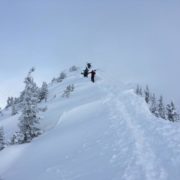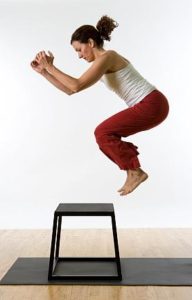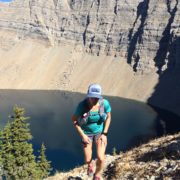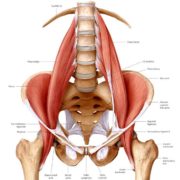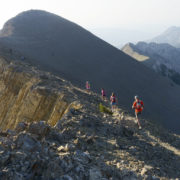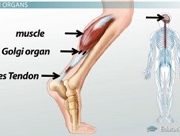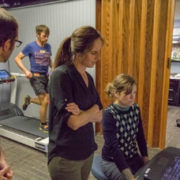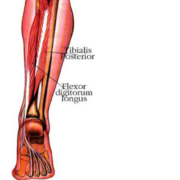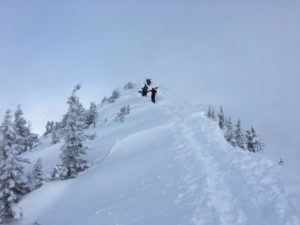 As snow begins to accumulate in the mountains surrounding Missoula, many runners long for the warm and sunny days we have become accustomed to over the past several months. Winter, however, provides a crucial opportunity to improve your overall health as a distance runner. Repeating the cycle of training-racing-recovering over several months takes a toll on the body. Consider complimenting your winter running with one of the many winter sports available to Montanans. Not only is winter cross training therapeutic, but it is fun as well. Introducing new movement patterns and loads will allow your bones, muscles and connective tissue to rebuild, providing long-term durability for the 2019 running season. Fitness is comprised of strength, mobility, aerobic conditioning, and power. While running is required to gain running fitness, it is important to gain strength, mobility, aerobic conditioning, and power to maximize running fitness. Winter is the time to train your weaknesses, not your strengths.
As snow begins to accumulate in the mountains surrounding Missoula, many runners long for the warm and sunny days we have become accustomed to over the past several months. Winter, however, provides a crucial opportunity to improve your overall health as a distance runner. Repeating the cycle of training-racing-recovering over several months takes a toll on the body. Consider complimenting your winter running with one of the many winter sports available to Montanans. Not only is winter cross training therapeutic, but it is fun as well. Introducing new movement patterns and loads will allow your bones, muscles and connective tissue to rebuild, providing long-term durability for the 2019 running season. Fitness is comprised of strength, mobility, aerobic conditioning, and power. While running is required to gain running fitness, it is important to gain strength, mobility, aerobic conditioning, and power to maximize running fitness. Winter is the time to train your weaknesses, not your strengths.
Strength training should be part of every off season plan for runners. A 2010 research article in the Journal of Orthopedic Sports Physical Therapy showed a correlation between impaired muscular control of the hip, pelvis, and trunk and increased knee pain in runners (Powers C. J Orthop Sports Phys Ther 2010;40(2):42-51. doi:10.2519/jospt.2010.3337). A strength training program aimed at providing functional stabilization of the hip and pelvis in multiple planes is, therefore, a vital part of any off season strengthening program. As we grow older, muscle strength becomes more important as we lose approximately 1% of our muscle mass every year. More importantly, the decline in muscle strength declines at a rate 3-times greater (Goodpaster, B.H., et al., The loss of skeletal muscle strength, mass, and quality in older adults: the health, aging and body composition study. The Journals of Gerontology Series A: Biological Sciences and Medical Sciences, 2006. 61(10): p. 1059-1064. https://www.ncbi.nlm.nih.gov/pubmed/17077199). Body weight strengthening is important if you are new to weight training or have a history of joint issues. To build muscle strength and durability, however, resistance training (bands, free weights, kettle bells) is necessary. Care should be taken to seek advice of a physical therapist or a personal trainer to assess your strength training technique. One muscle group many runners overlook are the calves (gastroc-soleus muscles). Between the ages of 20 and 60, runners typically experience a 31% reduction in ankle power, total power (ground reaction force to lift you off the ground and in a forward direction), along with a 13% decrease in stride length and running speed (DeVita P, Fellin RE, Seay JF. The relationship between age and running biomechanics. Med & Sci Sports & Exerc. 2016; 48 (1): 98-196.). Performing calf raises-drops and single leg hops will target the calves. Remember to slow down during weight training repetitions to maximize strengthening benefits. Two to three strength training sessions per week will compliment your winter outdoor activities.
Mobility becomes more elusive as we age. Runners are particularly vulnerable to stiffness in the knee, hip, and ankle joints as we move in only one plane. Addressing mobility restrictions with the help of a physical therapist will decrease your osteoarthritis risk and improve your running efficiency. Winter is the time to attend a yoga class, seek stretching advice, and have your running stride analyzed to decrease joint loading to promote joint health.
Aerobic conditioning requires consistent work. Experience has taught me that maintaining a base level of cardiovascular fitness in the offseason reduces the need to play “fitness catch-up” in preparation for spring running and racing. Building your aerobic engine to carry you up climbs both short and long requires specified training. High intensity intervals are never fun, but mixing it up the means by which you subject yourself to intervals reduces burn-out. Nordic skiing intervals, skinning (backcountry or ski mountaineering set-up) intervals, power hiking intervals, and cyclocross racing are great ways to disguise intervals in a fun and novel activity. One to two longer running or snow hiking workouts in your aerobic threshold range will build or maintain your aerobic fitness.
Power is achieved through explosive movements such as plyometric exercises and through interval training. Short intervals included in a workout 1-2 times per week will provide the acceleration a summer of long miles has taken away. Utilize a watch timer and heart rate monitor to gauge effort. Plyometric exercises include a loading phase followed by a propulsive unloading phase. Plyometric exercises should not be done when sore or injured, and an adequate level of strength is necessary to perform correctly. Again, seek advice from a physical therapist or personal trainer prior to adding power training to your off season program.
Motivation becomes challenging as the daylight hours shrink and the temperatures drop. To avoid runner’s burnout, reduce your winter mileage and intensity and shift your focus on the exercise suggestions outlined above. Embrace the season and find an outside activity or sport which is intriguing. I discovered backcountry skiing and randonee or ski mountaineering two years ago. A January-March Thursday night race series (Rando Radness) at Montana Snowbowl which is organized by Mike Foote attracts skiers of all ages and abilities in a fun, social atmosphere. The winter days of riding my bike on a trainer indoors are long gone.
Durability will reduce injury risk by preparing your body for the demands of the running season. Overall fitness (strength, mobility, aerobic conditioning, power) combined with reasonable training volume increases and adequate recovery determine one’s long-term running durability. The off season is the time to build running durability as distance running and racing have a catabolic (breaks down tissue) effect on body tissues. Make the coming winter a season full of adventure, recovery, rebuilding, and fun.
John Fiore, PT

